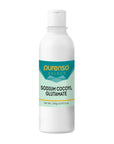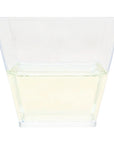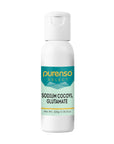





Di Sodium Cocoyl Glutamate (Sodium Cocoyl Glutamate)
| Description |
Di Sodium cocoyl glutamate is a vegetable surfactant derived from coconut or palm kernel oil. It is a mild cleanser and surfactant which is used as a foaming agent in shampoos, shaving foam, toothpaste, and other skincare products. It is extremely beneficial for people having sensitive skin and mild skin issues. Good surfactant for Sulfate-free, EO-free formulations |
| INCI | Di Sodium Cocoyl Glutamate |
| Active Surfactant Matter | 30% |
| Alternative names | L-Glutamic acid, Monosodium salt, disodium salts |
| Usage rate | 1-30% |
| Applications | It is used in a range of products such as shampoos, toothpaste, liquid soaps, baby care formulations, feminine hygiene wash, contact lens cleaners, shaving preparations. |
| Texture | Slippery, detergenty. Yellowish liquid, clear to cloudy |
| Scent | Characteristically detergenty |
| Charge | Anionic |
| Solubility | Water |
| Why do we use it in formulations? | It is a very gentle foaming agent which is used to make products for face, body, hair and hands. As it is made with amino acid, it has a very good affinity with (keratin) the skin and hair leaving them with a pleasant silky feeling. It also adds some conditioning to the hair, so the combing is easier (wet and dry). |
| Strengths | Sodium cocoyl gluatamate doesn‘t dry out the skin like other surfactants, so it is considered very mild. This surfactant has a good foamimg power and is resistant to hard water. The bubbles are fine and creamy, similar to SCI (sodium cocoyl isethionate). |
| What does Di Sodium Cocoyl Glutamate do in a formulation? |
|
| Properties |
|
| Benefits |
|
| Note |
|
![]()
![]()
![]()
This product is a cosmetic raw material and is intended for external use only in cosmetic and personal care formulations. It is not intended for internal consumption or medicinal use.
- Do not ingest.
- Keep out of reach of children.
- Avoid direct contact with eyes.
All product images are for illustrative purposes only. Actual product color, texture, or packaging may vary from batch to batch.
Information provided on this website is for educational purposes only and should not be considered or interpreted as medical advice.
While we do not offer products for internal use, we source only high-quality, pharmaceutical or food-grade ingredients. Ingredient purity and performance are critical in cosmetic applications, just as they are in ingestible products.
Please note:
Just because two products have the same name or CAS number does not guarantee the same grade, purity, or effectiveness. Always choose trusted suppliers. Choose Purenso for premium-grade ingredients you can rely on.
FREQUENTLY ASKED QUESTIONS






